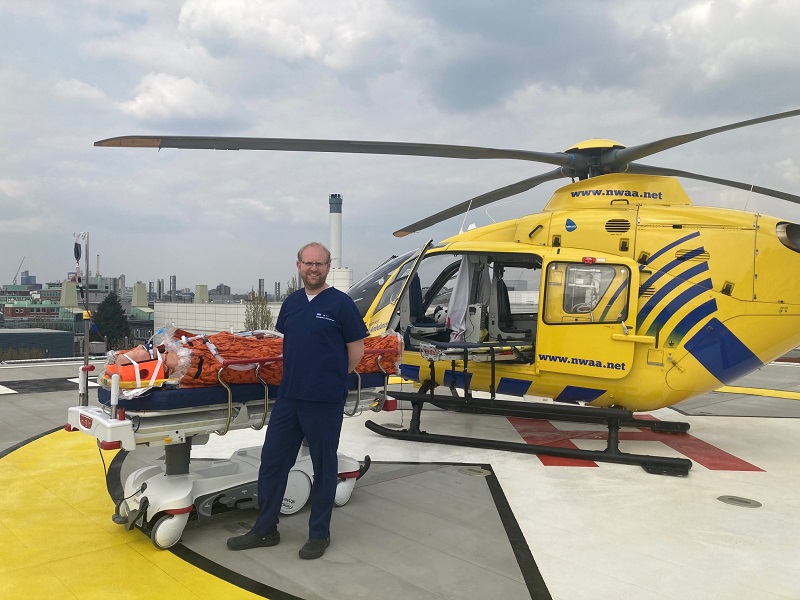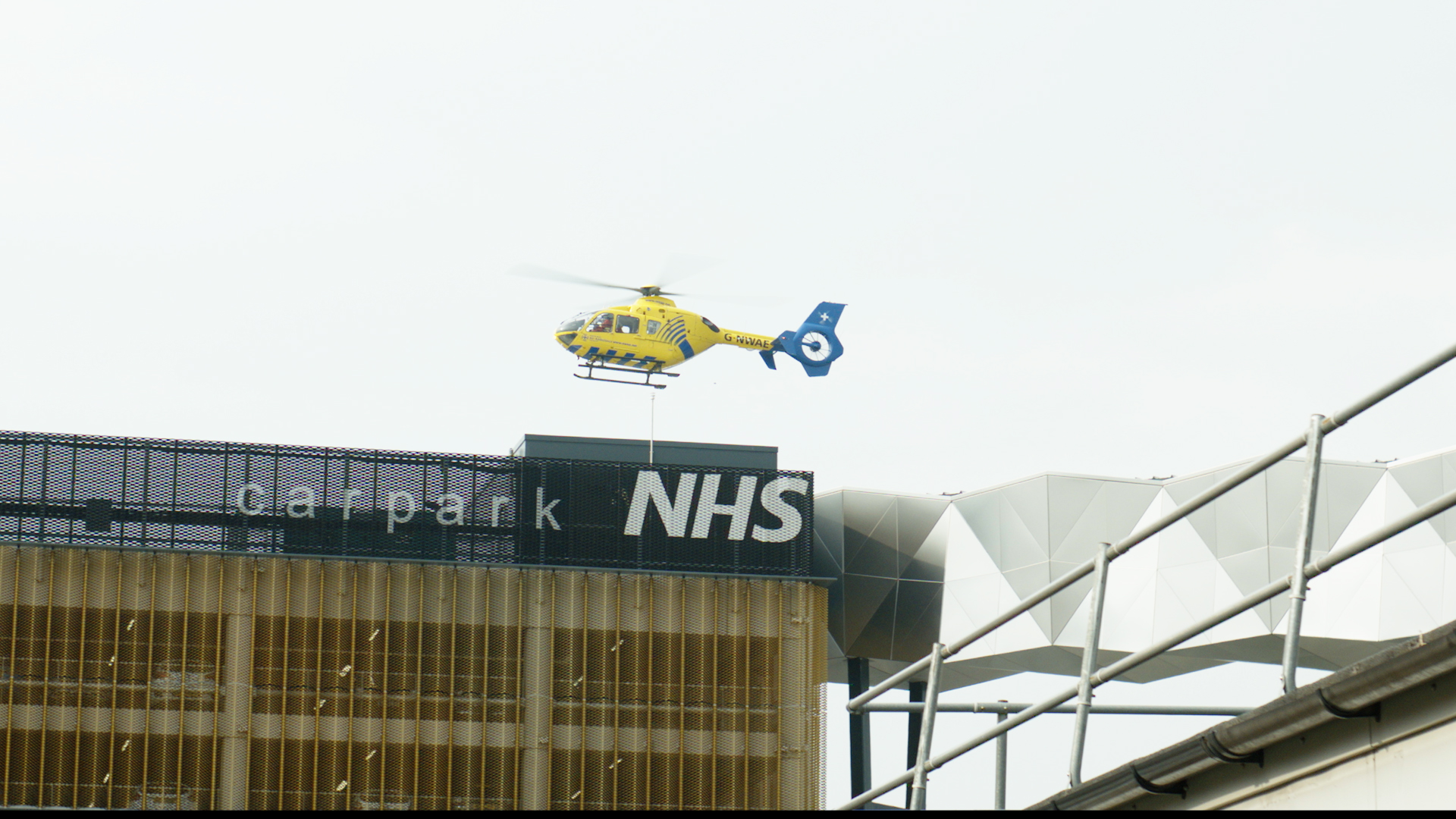
Charity-funded development will improve outcomes for critically-ill patients at Manchester hospitals
The first elevated Helipad of its kind in the North West opens at Manchester University NHS Foundation Trust
The new, lifesaving helipad at Manchester University NHS Foundation Trust (MFT) – the first elevated helipad of its kind in the North West – has opened to patients today (Monday 10th May, 2021).
Manchester University NHS Foundation Trust has become the first healthcare organisation in the North West to open a rooftop helipad, enabling critically-ill or injured babies, children, and adults to be airlifted straight to hospitals in the city centre.
The state-of-the-art facility, which is situated on the roof of the Grafton Street car park on the Oxford Road Campus (ORC), will
bring adults and children with life-threatening injuries to the major trauma centres at the Manchester Royal Infirmary (MRI) and Royal Manchester Children’s Hospital (RMCH).
Royal Manchester Children’s Hospital (RMCH) is the children’s major trauma centre for the entire Greater Manchester region and one of only two dedicated centres in the whole of the North West, providing care for seriously-ill or injured children.
And Manchester Royal Infirmary is one of two major trauma centres in the city.
Time matters
In an emergency, being able to land just minutes away from specialist care is crucial.
With the new helipad, patients will be transferred to MRI’s emergency department in less than three minutes; and to RMCH’s paediatric emergency department in under six minutes.
The new landing site could allow as many as 300 patients to be airlifted to the hospitals each year and is expected to save lives locally and regionally, increasing the chances of an improved level of recovery.
Alistair Rennie, consultant in emergency medicine and major trauma at the trust, and group clinical lead for emergency planning, said: “
“As a consultant in emergency medicine, I know the quality and speed of specialist medical care following a major trauma injury is vital to ensuring patients have the best chance of a full recovery.
“I am delighted that this development is now a reality, as for many patients our helipad could represent the difference between life and death.”
Generous donations
£3.9m towards the helipad was raised in just 12 months by the trust’s charity’s Time Saves Lives Appeal.
This included £1.1m from the Government’s LIBOR fines funds in the Chancellor’s Budget and a donation of £1.36m from the County Air Ambulance Trust’s Helicopter Emergency Landing Pads (HELP) Appeal, which is dedicated to funding hospital and air ambulance helipads across the country.
The charity also received a significant donation from The Stoller Charitable Trust.
Lorcan Duane, paediatric emergency department lead for major trauma at Royal Manchester Children’s Hospital said: “The new helipad will have a tremendous impact on children and young people across Greater Manchester and beyond who need access to the specialist services we provide.
“The helipad will not only benefit children with major trauma injuries, but also children who need time-critical transfers from other hospitals for specialist care and treatment.

“The speed with which a helicopter can transfer these types of patients is crucial and our new helipad will give air ambulance patients the safest and quickest place to land.”
The helipad has been commissioned by the Air Ambulance Operators and inspected by the Civil Aviation Authority international (CAAi) to ensure it complies with the regulatory standards for helipads at hospital sites.
A significant step forward
Andy Curran, medical director at the North West Air Ambulance Charity, said: “When it comes to major trauma incidents, it’s absolutely vital that our crew are able to reach, treat, and transport patients to the most-appropriate specialist centre as soon as possible to improve chances of survival.
“On-site helipads ensure patients can reach these centres incredibly quickly, and the MFT site helipad allows access to both adult and children’s major trauma centres.
“It’s a significant step forward for the provision of enhanced pre-hospital care within Greater Manchester and the wider North West, and countless patients will benefit from this helipad in the years to come.”
Once a helicopter has landed, patients will be safely offloaded from the air ambulance by the team at the North West Air Ambulance Charity and then transported via the high-level patient transfer corridor by specialist dedicated helipad transfer teams.
Tony Eggar, senior helipad officer, said: “All flights to and from the helipad will be overseen by the helipad response team who will manage the safe landing and departure of the aircraft.
“Last month we ran refresher training days for all staff working on the helipad and, going forward, my role will be to ensure the highest standards are met and that the rooftop helipad remains safe for all our patient transfers in the future.”
Improving outcomes
Previously, air ambulances carrying critically-ill or injured patients to the hospitals had to use a secondary landing site in parkland a mile away. Patients were then transferred by road ambulance.
Robert Bertram, chief executive of the HELP Appeal, said: “Not only will the transfer of an air ambulance patient to the emergency departments be much smoother and faster, greatly improving their chances of survival and recovery; but it will also eliminate the need for a secondary transfer by road ambulance, freeing up North West Ambulance crew to help other patients in need across the region.”